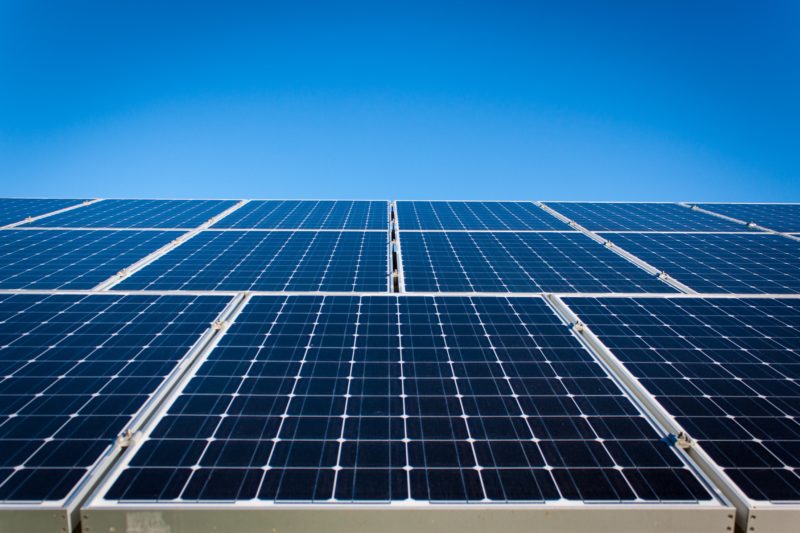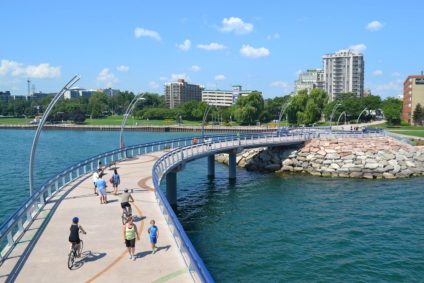Net-Zero Homes: The Next Step in Sustainable Building

Habitat for Humanity is all about redefining what’s possible. We’re always searching for new ways to be leaders in the construction of affordable housing, all around the world. Most recently, Habitat Manitoba unveiled their first-ever net-zero Habitat home.
What’s a net-zero home?
A net-zero home is one that generates its own energy locally, often using solar power and cost-saving features to do so. The aim is for these houses to produce at least as much energy as it uses. Surplus energy (whatever is generated that the family doesn’t use) can either be stored within the home in a battery or sold back to the power grid in exchange for a credit towards their electricity costs.
Habitat Manitoba’s net-zero homes
On May 30, five families received the keys to their new homes, which will generate at least as much energy as they use.
“We don’t have to pay for hydro… it’s beyond my expectations,” said Kahasse Gebremicahel, to CBC in an interview.
Gebremicahel moved into their family’s new home, with his wife and two daughters, in June.
“They said it’s going to produce as much [power] as it consumes, so that means I’m paying nothing… It’s a big deal.”
Not only did Habitat Manitoba build the first net-zero home the organization has ever seen, they built five of them. Solar panels cover the roofs of a four-plex unit and a single-family home across the street.
Each home has 30 solar panels, producing 9.6 kilowatts per hour, equating to a savings of roughly 12,680 kilowatt hours every year, Jason Miller, who designed the homes, told CBC in an interview.
Any leftover energy from the solar panels that the family doesn’t use will go back into Manitoba Hydro’s grid.
With Habitat Manitoba paving the way for zero-net construction within our organization, they’ve shown us that if we can build sustainable housing affordably, then the same can be done anywhere.
How does Habitat HMD build sustainably?
At Habitat HMD, we are highly conscious of our environmental impact.
Through our ReStores, we have diverted more than 5.3 million pounds of waste from landfills in the last six years. Our new ReVive Centre takes it one step further, by upcycling items that would otherwise be thrown away.
But as a not-for-profit with construction at our core, it’s important to us that our build projects are environmentally responsible.
Habitat HMD places energy-efficiency at the forefront of our build projects. Not only out of concern for the environment, but also to ensure that our homes can be as affordable as possible for their hardworking inhabitants (by keeping their electricity bills low).
We construct Habitat homes using triple pane windows and a thicker wall cavity which both help with energy efficiency. All of the appliances we install within the home are energy efficient, along with the home’s lighting.
We also build all homes above the Ontario Building Code in quality.
What’s next for Habitat HMD?
As we’ve mentioned, here at Habitat HMD, we’re never satisfied with the way things are. We’re always exploring how we can do things better and how we can maximize our impact in constructing affordable housing.
Looking towards the future, we’re considering four options for increasing the sustainability of the homes we construct.
1. Passive homes
A passive house is one that’s built to be energy efficient, comfortable, affordable and ecological. This is done by reducing heating requirements in homes because they’re able to maintain constant temperatures. This means it doesn’t need to be continually heated or cooled, making it a passive home.
Passive houses draw on heat generated from appliances within the home (like ovens, computers and light bulbs). This heat is trapped within the home by its air-tight seal and heavy insulation.
2. EnerQuality homes
EnerQuality is the number one certifier of energy efficient homes in Canada. This certification acts as proof that a home has been built to the highest standards of energy efficiency.
3. Net-zero ready homes
Net-zero ready homes are built ready for the installation of solar panels.
4. Fully net-zero homes
Homes that are fully net-zero are built with solar panels already installed, as seen in Habitat Manitoba’s recent builds.
Net-zero homes would either be set up with solar net metering or zero export.
Solar net metering allows residents who are generating their own electricity to send excess electricity back to the grid, in exchange for a credit where applicable. This credit would be used towards the family’s bills in the winter months when the sun isn’t as strong and produces less energy. This ensures that their electricity expenses for the year will balance out at zero, or very close to it.
Zero export would allow the family to store the electricity they don’t use in a battery, for their household to use as they need it. This would be used in areas where returning energy to the grid in exchange for credit is not an option.
All four options would increase energy-efficiency by adding continuous exterior insulation to decrease thermal bridging (when there’s a path within the construction of the home that allows heat to pass through and escape) and by completing performance tests at various stages during construction to ensure the airtightness of the home.
A future of affordable and sustainable housing
“We are working with our architects to investigate all of our options and the costs associated with each versus the benefits both as social good and for home value,” said Sarah Golan, senior manager of building at Habitat HMD.
As a leader in expanding affordable housing within our community, Habitat HMD is excited to continue paving the way for building energy efficient homes and focusing on sustainability.
With files from CBC.
Learn more about Habitat Manitoba here.
Check out Habitat HMD’s current build projects here. If you’re interested in supporting our mission to continue expanding affordable housing within our community, click here.
By: Olivia Kabelin
Updated: July 2, 2021


